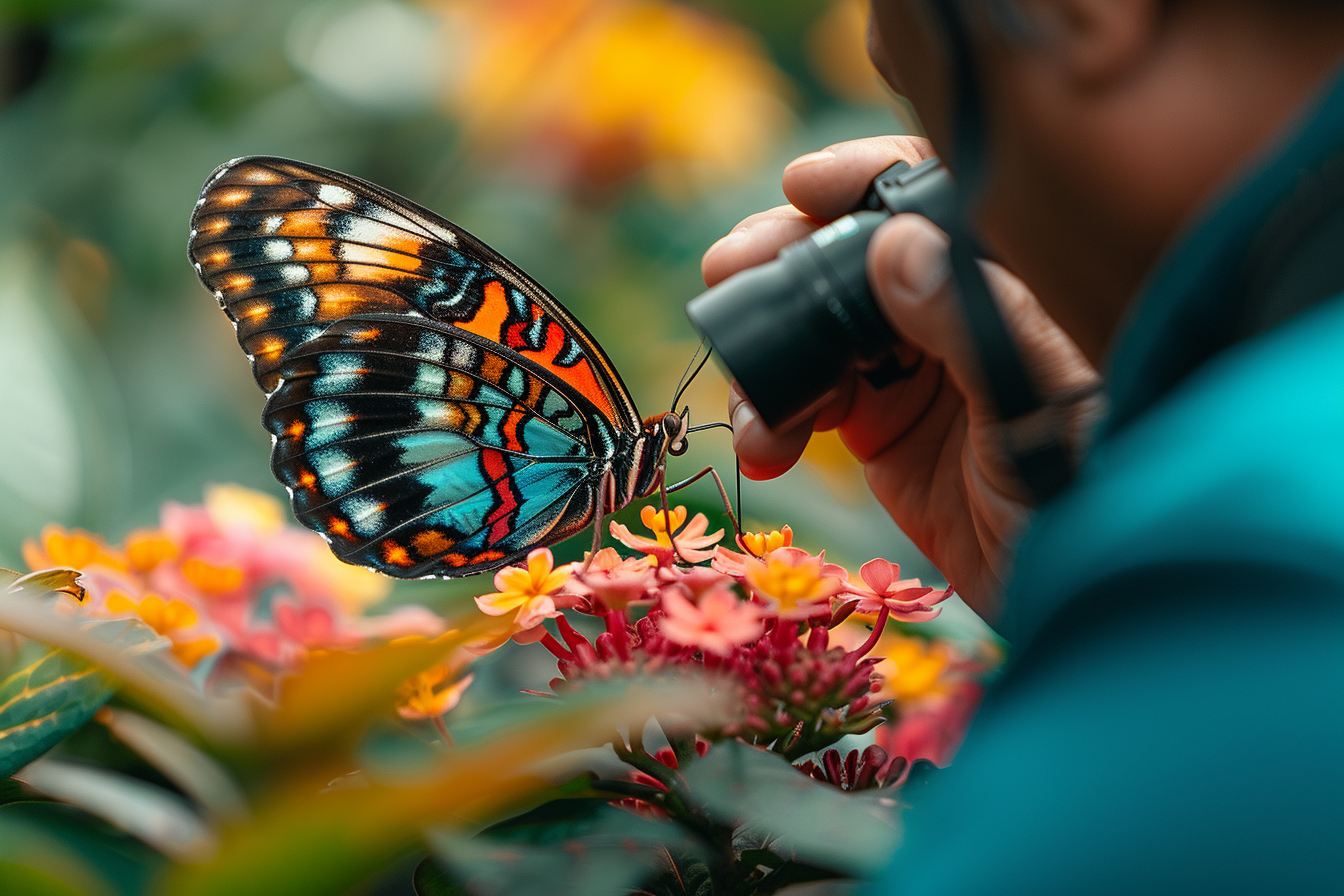Butterfly watching, or lepidopterology for enthusiasts, is a tranquil and rewarding hobby. These fluttering beauties captivate with their vivid colors and graceful movements, offering a glimpse into the intricate balance of nature. To elevate your butterfly-spotting experience, it’s essential to hone your techniques and sharpen your observational skills. The following tips are designed to enhance your appreciation of these fascinating insects and increase your chances of spotting them in their natural habitat.
Understand butterfly behavior
Sunny days are best
Butterflies thrive in warm weather, as the sun helps regulate their body temperature. They are cold-blooded and need the sun to muster the energy for flying. To maximize your sightings, choose a day with clear skies and mild winds. Overcast conditions often lead to less butterfly activity since they rely on the heat of the sun to stimulate their movement.
Timing is key
Mornings are typically the prime time for butterfly activity. This is when they emerge to bask in the sun and feed on nectar. However, don’t limit yourself to early hours. Many species remain active throughout the day, and some are even more likely to be seen in the late afternoon.
Know their hotspots
Butterflies frequent areas rich in food sources and sunlight. Gardens, meadows, and anywhere flowers are abundant will be hotbeds for these insects. They are particularly drawn to bright, vibrant blooms that stand out in their environment.
Spotting techniques
Approach with care
Stealth and calmness are your best assets when approaching butterflies. Move slowly and avoid casting a shadow over them, which can startle and cause them to fly away. Remember, patience is not just a virtue but a necessity in butterfly watching.
Using binoculars
Investing in a pair of binoculars designed for close-focus viewing can dramatically improve your butterfly watching. This allows you to see butterflies up close without disturbing them, especially useful for shy or rare species that might be scared off by your approach.
Creating an attractive environment
Plant a butterfly garden
By planting a variety of nectar-rich plants, you can attract butterflies to your own backyard. Plants like milkweed, lavender, and asters are excellent options. Remember to opt for indigenous plants which cater to the native butterfly species in your region.
Avoid pesticides
Chemicals can not only harm butterflies but also eradicate the plants they depend on for survival. If you want to create a haven for butterflies, practice organic gardening techniques that do not rely on harmful pesticides.
Understanding their lifecycle
Caterpillar host plants
Recognizing that butterflies are only one phase of a complex lifecycle deepens your butterfly-watching experience. Identifying and protecting host plants for caterpillars in your area can increase the butterfly populations. Common host plants include dill, fennel, and willow trees.
Stages of development
Witnessing a butterfly at different stages of its development can be incredibly rewarding. Spotting eggs, caterpillars, chrysalises, and then finally adults offers a comprehensive view of their lifecycle and boosts your chances of observing butterflies.
Photography tips
Equipment choices
A good quality camera with a macro lens is ideal for butterfly photography. This setup allows you to capture detailed shots without getting too close and potentially disturbing the butterfly.
Be patient
One does not simply snap a butterfly’s photo on a whim. Wait for the butterfly to land and settle before attempting to take your picture. This patience typically results in a clearer, more composed shot.
Natural lighting
Utilize natural light to highlight the colors and patterns on a butterfly’s wings. Early morning or late afternoon, when the light is softer, can help avoid harsh shadows that midday sunlight may cast.
Etiquette and conservation
Respect their habitat
Exploring habitats with minimal disturbance is critical. Avoid trampling on plants or removing anything from the environment. Each component of the habitat plays a role in the survival of butterflies.
Promote conservation
Engage with conservation efforts in your area to protect butterflies and their habitats. Participation in citizen science projects such as butterfly counts or monitoring programs can contribute to valuable research and conservation efforts.
Leave no trace
Adopt the principles of ‘Leave No Trace’ to ensure that your presence does not negatively impact the environment or the butterflies themselves. Dispose of waste properly and limit your footprint on natural areas.
Community and learning
Join butterfly watching groups
Connecting with local butterfly watching groups can enhance your skills through shared experiences. These groups often organize outings and provide a platform to exchange tips with fellow enthusiasts.
Educational resources
Dive into books, online forums, and workshops to learn more about butterflies. Continuous learning is the backbone of any successful butterfly-watching endeavor.
By integrating these insights into your butterfly-watching practices, you stand to enrich your interactions with these remarkable insects immensely. From understanding the subtleties of their behavior and habitats to creating environments that support their lifecycle, each facet of this guide aims to cultivate a more immersive experience. Armed with patience, respect for their world, and a bit of strategic planning, you can transform your casual interest in butterflies into an earnest pursuit teeming with discovery and satisfaction. Remember, while the pursuit of butterfly watching is personal and varied, the joy it brings often lies in the shared moments of wonder these delicate creatures bestow upon us.

Leave a Reply